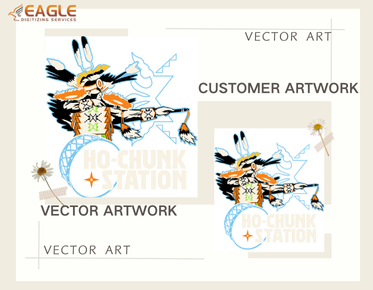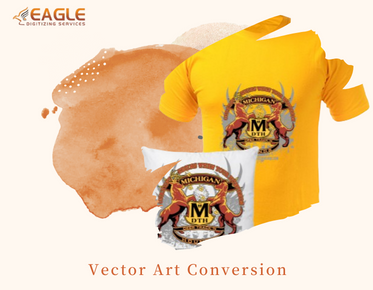What Exactly Is a Vector Graphic and Why It's Essential for Embroidery and Printing?
In the vibrant worlds of embroidery and printing, images and designs take center stage. The way these images are processed, especially in terms of their quality and scalability, has significant effects on the final product. This is where vector graphics come into play. So, what exactly is a vector graphic, and why is it so crucial for both embroidery and printing?
Understanding the Basics of Vector Graphics
Unlike raster graphics which are made up of pixels, vector graphics are composed of paths defined by mathematical expressions. These paths consist of points, lines, and curves, creating images that can be scaled indefinitely without sacrificing quality. This means a vector image retains clarity and precision at any size, making it ideal for high-quality outputs in both small and large scales. Common vector file formats include SVG, EPS, and PDF.
The Importance of Vector Graphics in Embroidery
Embroidery requires designs that are precise and clear. A vector graphic serves as an ideal input for digitizing which is the process of converting artwork into a stitch file that an embroidery machine can interpret. The paths in vector files allow for accurate control of stitch points, ensuring the design is replicated exactly as envisioned. Furthermore, it facilitates easy editing of designs to tailor them to specific embroidery requirements without losing quality.
For those in the embroidery business, accurate representation and high-quality outcomes are paramount. Companies like Eagle Digitizing offer top-notch digitizing services, converting designs from simple logos to intricate artworks into digitized formats, suited for machines that create stunning embroidered pieces. Eagle Digitizing excels by utilizing sophisticated software and a skilled team to deliver exceptional results consistently.
Why Vector Graphics Are Essential for Printing
When it comes to printing, precision and color consistency are key. Vector graphics ensure that each print maintains its integrity, whether it is on paper, fabric, or other materials. The scalability of vector graphics allows them to be adjusted to any dimension needed without loss of detail, making them perfect for anything from business cards to large banners. With vector graphics, the lines remain crisp and the colors vibrant, providing the aesthetic quality needed for professional printing.
Vector conversion services, such as the ones offered by Eagle Digitizing, are instrumental in this process. They facilitate converting raster graphics or original artwork into vector format, ensuring that the final printed product meets high standards of clarity and quality.
Applications and Advantages Across Industries
Beyond embroidery and printing, vector graphics have widespread applications across various industries, including graphic design, signage, and branding. Businesses find vectors indispensable for creating logos that must appear on everything from small promotional items to large advertisements. These graphics ensure brand consistency and visibility regardless of size, medium, or platform.
For individuals and companies aiming to enhance their product offerings, availing services such as vector conversion and logo vectorization can be pivotal. Eagle Digitizing and similar service providers specialize in offering a wide range of capabilities—from image vectorization to logo design and color separations tailored for specific printing methods thus ensuring customers receive precisely what they need for successful print and embroidery outcomes.
Future Perspectives on Vector Graphics Usage
As technology evolves, the demand for high-quality, adaptable graphics continues to increase. With the growth of customization in products like apparel and promotional materials, businesses are increasingly relying on vector graphics to deliver personalized, high-quality products. The continued evolution of tools for vector creation and conversion, driven by AI and machine learning advancements, promises to further streamline and enhance the capabilities of vector graphics in creative industries.
What are the next frontier applications of vector graphics that you believe will transform the design and printing industry? Consider the ongoing innovations and imagine the possibilities as vector graphics continue to redefine visual quality and flexibility in digital and printed media.
.png)


